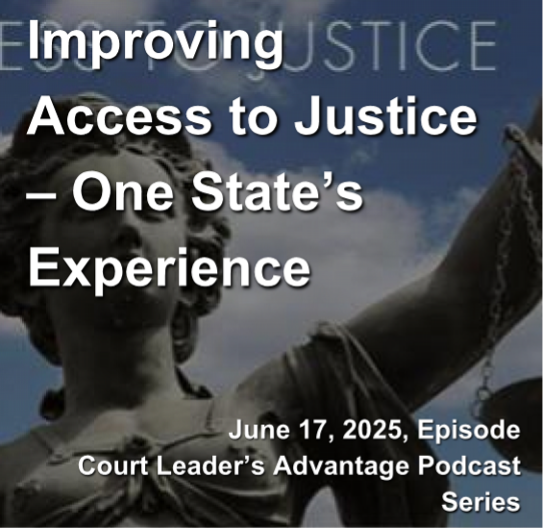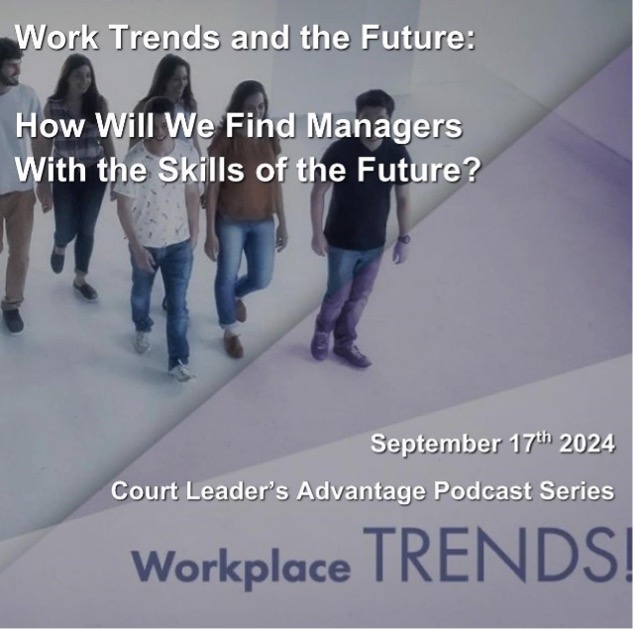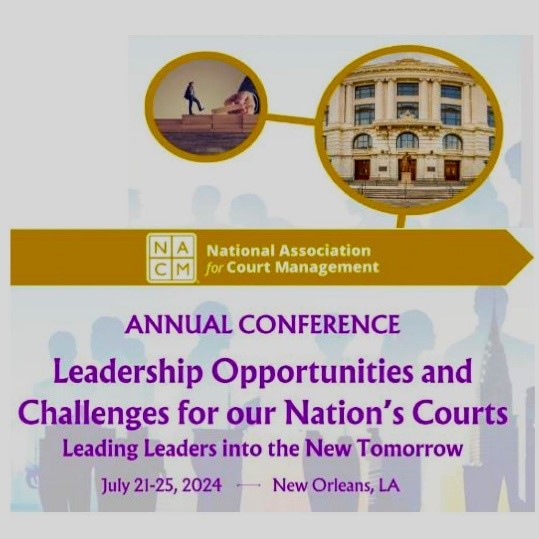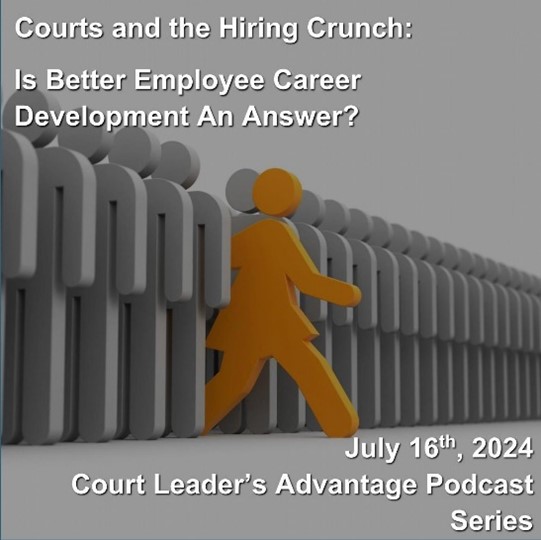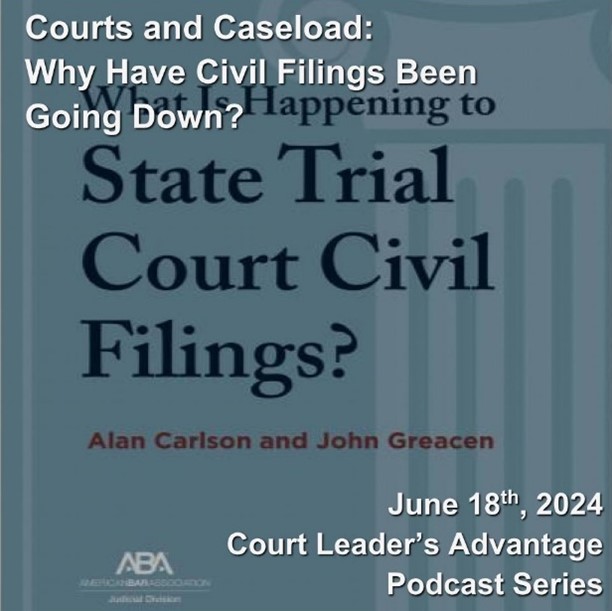Improving Access to Justice – One State’s Experience
Court Leader’s Advantage Podcast Episode – June 17, 2025 Civil case filings per capita have been declining nationally for decades. John Greacen and Alan Carlson explained […]AI in the Courts: Are Your Policies and Training Ready for the Future?
Court Leader’s Advantage Podcast Episode May 20, 2025 Artificial Intelligence (AI) is no longer just a futuristic concept, it is already reshaping how we live and […]The Future of Hiring: Is There a Balance Between AI, Diversity, and Court Expertise?
NACM Court Leaders Advantage Podcast Episode – April 15, 2025 Employee hiring is at a crossroads. With artificial intelligence (AI) revolutionizing the way resumes and applications […]How Do We Navigate the Tension Between Cities and Municipal Courts?
NACM Court Leader’s Advantage Podcast Episode – March 6, 2025 The relationship between cities and their municipal courts is often marked by underlying tension. While courts […]Trauma-Informed Engagement and the Courts: What We Need to Know Now?
NACM Court Leader’s Advantage Podcast Episode – February 18, 2025 Understanding trauma-informed engagement is increasingly essential for court employees and judges. Many—if not most—individuals who interact with […]What are the Five Biggest Opportunities Facing Young Workers Today?
January 21, 2025, NACM Court Leader’s Advantage Podcast Episode Last month we talked about the five biggest issues facing young workers. This month we will look […]What are the Five Biggest Issues Facing Young Workers Today?
December 17, 2024, NACM Court Leader’s Advantage Podcast Episode This month and in January we’re looking at the 5 biggest issues and the 5 biggest opportunities […]Artificial Intelligence Is Already Here: Is Your Staffing Using It? Do You Know? Do You Care?
October 15, 2024, NACM Court Leader’s Advantage Podcast Episode Forbes Magazine recently published an article titled “10 Biggest Business Trends Everyone Must Be Ready For Now.” […]Work Trends and the Future: How Will We Find Managers with the Skills of the Future?
September 17th NACM Court Leader’s Advantage Podcast Episode The world-renowned technology advisory firm The Gartner Group has come out with its Nine Future Work Trends for […]NACM in New Orleans 2024: What Was Your Biggest Takeaway?
August 20th NACM Court Leader’s Advantage Podcast Episode The 2024 NACM annual conference brought together court professionals from across the country to share best practices, address […]Courts and the Hiring Crunch: Is Better Employee Career Development An Answer?
July 16th NACM Court Leader’s Advantage Podcast Episode In previous podcasts, we have discussed the unprecedented hiring crunch facing our country. Intensified by the COVID-19 pandemic, […]Courts and Caseload: Why Have Civil Filings Been Going Down?
June 18th NACM Court Leader’s Advantage Podcast Episode Civil filings are falling. They have been for some time. In fact, most court filings have been on […]

